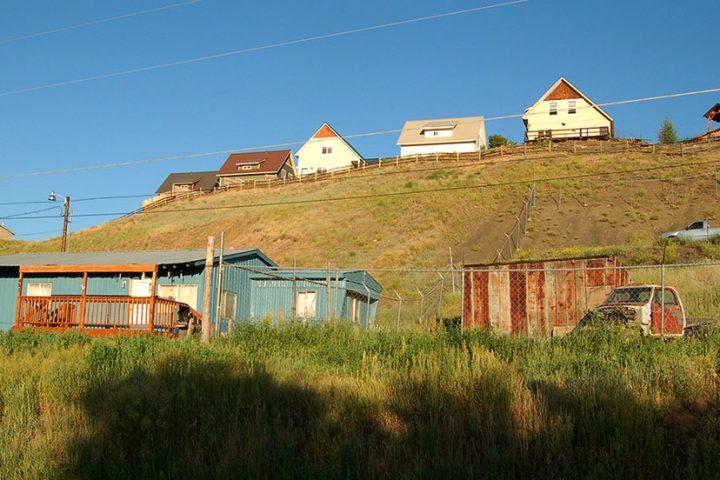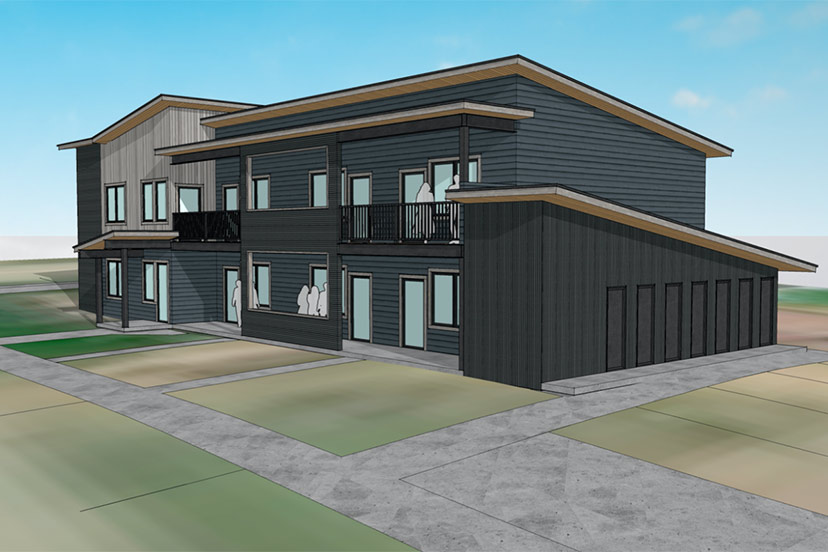At last month’s Town Planning Commission meeting, the commissioners were faced with a proposal that challenged the Town’s zoning rules.
Former Town Planning Commissioner Peter Hurley is proposing to build some workforce housing — an eight-unit apartment building — on a vacant 1/6 acre parcel at the corner of South 7th and Piedra Streets. According to the Town’s Land Use and Development Code (LUDC) Mr. Hurley is allowed only two units on a 1/6 acre lot, at that location.
But Mr. Hurley was able to bring forward an architectural design showing how eight units — and the required parking — could be fit onto this particular lot.
As curious as it may seem, the Town’s zoning and LUDC have been carefully conceived to prevent the kind of apartment Mr. Hurley hopes to build on his vacant lot.

Mr. Hurley already owns an older four-plex on the adjacent parcel to the south, and he rents it out priced as workforce housing. That four-plex would not be allowed under the Town’s current LUDC and zoning map, as new construction.
Readers might want to contemplate why the Town of Pagosa Springs has made a residential four-plex such as this one, below, illegal within many of our downtown neighborhoods, when proposed for a 1/6 acre parcel.
Speaking for myself, I cannot imagine why a municipal government would choose to prohibit this type of housing…

Is the efficient use of private property for housing purposes, viewed as a detriment to the community? And if so, why? Good questions.
Recently, however, the Town Council added an amendment to the LUDC that allows them to approve practically any type and size of dwelling, almost anywhere within the town limits, if it professes to be ‘workforce housing’. The Council had been negotiating, for example, with Texas-based Servitas to build a 28-unit apartment within the footprint of South Pagosa Park — a property that is not even zoned for housing, and at a density of twice the number of units allowed anywhere within the town limits.
The Council recently approved another Servitas project that proposed 24 units on a parcel where the LUDC would normally allow only 6 units.
On April 26, the Planning Commission gave their stamp of approval to Mr. Hurley’s eight unit apartment building on South 7th Street, with the stipulation that he deed restrict some of the units to keep them ‘affordable’ for a period of at least seven years. As I understand it, this stipulation might make it difficult for Mr. Hurley to obtain financing for his project.
We note that Mr. Hurley is not asking for any taxpayer subsidies for his project. All he is asking for is permission to build exactly the type of housing that our community is lacking — multifamily apartments — in the very neighborhoods the Town Council wants to see them built.
For doing precisely what our elected leadership actually want done, he must sign a deed restriction for seven years.
What might be even more curious about the situation? The rent limits specified in the Planning Commission recommendation, would allow Mr. Hurley to charge about twice the rent he currently charges at the four-plex next door.
But even with permission to charge historically high rents, he may have difficulty getting financing.
I mentioned, in Part Two, that the Town of Pagosa Springs has taken several steps towards encouraging more workforce housing in our community, and the approaches have become increasingly ambitious (and expensive) as the crisis has grown progressively worse over the past ten years.
The first step — taken jointly with the Archuleta Board of County Commissioners — was to establish an ‘affordable housing task force’ in 2015, and then to dedicate funding in our government budgets to support housing, starting in about 2016. The Town began making small modifications to its Land Use and Development Code the following year — permitting ADUs (Assessory Dwelling Unit, also known in-law apartments, granny flats, casitas or backyard cottages) in all zoning districts, allowing municipal utility hook-up fees to be waived. A succession of other changes reduced the minimum lot size, reduced the minimum dwelling size, provided for a ‘density bonus’ in exchange to a certain percentage of deed-restricted units.
The Town’s first steps were, in other words, a loosening up of existing restrictions, to see if the crisis could be solved without spending any taxpayer money.
From what I can tell, these changes and actions have done very little to encourage the construction of new housing that’s affordable for working individuals and families.
What seems to make a very significant difference is the provision of land. When the BOCC, in 2019, signed a long-term lease with the Archuleta County Housing Authority for 2.5 acres on Hot Springs Boulevard, the result has been 34 units of low-income housing, now under construction, and some of it already rented.
When the Town purchased two half-acre parcels on Apache Street and offered them to Servitas — along with a controversial offer of a half-acre within South Pagosa Park — the result was a proposal to built 64 units of workforce housing, deed restricted for 40 years.
Now that the South Pagosa Park offer has (apparently) been withdrawn, to be replaced (perhaps) by an even larger and more buildable parcel, the number of units eventually built by Servitas might exceed the originally planned 64 units.
The new housing proposed by Servitas and by Peter Hurley feature a more contemporary styling than the typical older homes in the South Pagosa neighborhoods, many of which started out as mobile homes or very modest single family homes, sometimes with economical additions appended to them.

But we are not hearing complaints, so far, from the neighbors, about the contemporary architectural designs. I think people understand that building technology has changed since the mid-1900s, when many of the downtown homes were erected. I think most people understand that we are experiencing a housing crisis of unusual proportions, and that the historical look of our neighborhoods will need to change as we address the crisis.
Some people might question the use of local taxes and fees to help address a crucial social crisis like housing, and that’s certainly a valid topic of debate.

